Trouble ahead?
I'm a ponytail palm fanatic and could not resist picking up these two PT's at my local Wally world (on sale for $5 from the original price of $10) about a week ago. I haven't watered them since I got them (at the time the soil was quite wet - maybe /too/ wet). Can anyone confirm for me why the fronds on the one are starting to yellow (the entire plant was quite healthy looking when I picked it up)? And on the other, why the fronds are a very, very dull/pale green? FWIW, they are both in front of a east window (one is a three-four feet away, the other maybe ten feet away) and the 'trunk' of the PTs are both firm.
{{gwi:75416}}
{{gwi:75417}}
The third image is of a prayer plant that was flourishing for years but has recently declined. It's in front of an eastern window now (it was moved to a western window where it rapidly declined). If anyone can offer insight into why it might be declining or if it's a lost cause (or hopefully what can be done to save it) it would be very much appreciated!
{{gwi:75418}}
Comments (28)
tapla (mid-Michigan, USDA z5b-6a)
12 years agolast modified: 9 years agoIt's impossible to say with any degree of certainty what might be wrong with the ponytails, but the prayer plant appears to have been severely over-watered, over-fertilized, or both. Also, plants very often shed foliage when they are subjected to a marked decrease in light levels, so the dull or yellowing foliage could be a result of any one of several causes. Lead suspects would be over-watering, over-fertilizing, and a pest infestation. Check the plants carefully for mites and other pests to rule out insects. Let us know if you've fertilized (probably not, since you haven't watered?), and how long the soil remained wet after you brought the plants home.
Al
lenle
Original Author12 years agolast modified: 9 years agoHey Al, thanks for the quick reply!
The ponytails remained moist to the touch for about three or four days after I brought them home. I usually inspect plants prior to bringing them in for any critters that might be crawling about and didn't notice any in the store nor in the days that followed bringing them into my home. I haven't fertilized them either - believing they shouldn't be fertilized until early spring/summer.
The prayer plant is several years old and hasn't been fertilized either for quite some time. It used to be a lot fuller than it is now, but most of the plant died off (the leaves turned crispy, crunchy brown and shriveled). Typically the west window it was placed in got a good amount of sun, but when it got moved to the corner of that window, the amount of sun it got declined. It's now in an east window that gets a healthy amount of light each day but I'm wondering it might be too late (though I really hope not since this plant has a lot of sentimental value).
Related Professionals
Lyons Landscape Architects & Landscape Designers · Tomball Landscape Architects & Landscape Designers · Goodyear Landscape Contractors · Westwood Landscape Contractors · Brandon Landscape Contractors · Chelmsford Landscape Contractors · El Sobrante Landscape Contractors · Fair Lawn Landscape Contractors · Lorain Landscape Contractors · Mesa Landscape Contractors · Paramount Landscape Contractors · Point Pleasant Landscape Contractors · Ringwood Landscape Contractors · Setauket-East Setauket Landscape Contractors · West Haverstraw Landscape Contractorscactusmcharris, interior BC Z4/5
12 years agolast modified: 9 years agolen,
Your Beaucarnea recurvata plants (nice ones, too, btw) are underpotted and want to grow, even in the winter. Repot them into porous soil and wait a few days before watering them a bit. The yellowing leaves are fine - they shed the old as they grow the new. It's a good idea, that, about waiting to fertilize until spring. When it is warm, these plants appreciate full sun (make sure you acclimate them to it).
jean001a
12 years agolast modified: 9 years agoGrowing outdoors in SoCal, Beaucarnea thrives in full sun. Yours receive hardly any light. Move them.
birdsnblooms
12 years agolast modified: 9 years agoLen, your PT is a beauty. However, it is rootbound, 'note roots atop soil.' What about bottom drainage holes?
I don't doubt Walmart over-watered. However, your PT is so rootbound, soil should have dried fast.. Does the soil look heavy? If so, it needs a well-draining medium with room, 'though not too much room' for roots to grow.
Potted Pony Tails needs proper watering. Too much, foliage yellows and bulb? can rot, too little, tips brown. Better too little water than too much, but the correct amount should be given in order to keep your PT looking its best.
Since you're a PT fanatic, I assume you have others?? How are they doing?Prayer plant. Your Prayer was doing fine until it was moved from east to west??
Although Maranta/Prayer Plants need light, they do best in medium, (no direct west or south) sun, humidity, fresh air, away from heating vents-a/c.
I have half-a-dozen Marantas-Calatheas/Ctenanthes/Stromanths, 'relatives.'
During winter, they're placed in a bright window, 'bright for IL,' and watered when soil dries.
Now that day light is longer and stronger, the west windows light is too harsh..Because I haven't yet moved a couple to a lower lit area, some leaves browned..they look identical to yours.
And, they now need more water.
A couple Marantas under artificial light are doing much better than those before a window.If it was my Prayer Plant, I'd remove dead foliage. As a precaution, check for insects, though I doubt bugs are the problem.
Keep in the east window. (Place PT in west instead.) Shower Prayer Plant leaves in the sink w/o hitting soil.Marantas need less water during winter..They don't like or need large containers. Marantas are difficult, fussy plants.
What I don't understand is, you said your Prayer Plant is several years old. Has it done well the last few years, 'especially winter,' or is this a first? Did you do anything different this year than past years? Example, setting in west window?Question. I agree Pony Tails/Beaucarneas need room to grow, however, I have a PT in a Bonsai pot. '10 yrs+.'
Soil dries super fast, well, needs daily watering..lol.
Am I supposed to prune roots? Should it not be kept as a Bonsai now that the bulb and foliage are larger?? Its bulb almost if not half the size of the pot. Roots are 'not' growing out of drainge holes. It looks healthy enough, and I'd like to keep it that way. Prune or not to prune? Repot in standard pot or keep in Bonsai container?Len, forgot to ask. Do you have different types of PT's? For instance, variegated, red hued?? Thanks, Toni
lenle
Original Author12 years agolast modified: 9 years agoThanks to those that have replied so far!
I'm going to repot both in Al's gritty mix sometime this weekend when I have a chance to mix up a fresh batch. I have two other ponytails that are planted in it, both in east facing windows and both are flourishing. I'm hoping the issue is a combination of being root bound and perhaps over watered (though not to the point where I can't save them!) and maybe even just plain bad soil. When I do repot them, should I think about maybe clipping the roots? What else does this promote other than growth?
Typically, I let my ponytails grow as they will. I'm not comfortable enough in the practice of pruning them or otherwise guiding their growth, though it'd be fun to learn since one of my other ponytails has absolutely gorgeous frond growth but lacks the trunk-like appearance the two ponytails pictured above have. {{gwi:75419}}.
The prayer plant is at least seven years old, though this is the first time it's become so terribly unhealthy. It never withered during the winter before. The decline in its health occurred around when I moved it out of it's prior spot (where it got a lot of sun) in front of a west window to another stand nearer a corner of the window (where it didn't get as much sun). I now have it in an east window where it gets a good deal of morning sun. It hasn't been watered since I moved it there and the soil is slightly moist to the touch (it's been a couple of weeks). The maranta/calathea family of plants are another plant I absolutely adore, though fully agree that they are very finicky and dramatic. I terribly miss the Makoyana I used to have and continue to strike out in finding someone local who raises them. I am learning, though, not to mother my plants as much as I used to!
Toni: Out of the five (five makes a fanatic, six makes an addict?) ponytails I have, the only difference is in the shape of the fronds. Two have a really curly, soft appearance, two more are fairly broad and non curly and the third has a slim, wiry appearance.
birdsnblooms
12 years agolast modified: 9 years agoMorning Len...Sorry, I don't know anything about pruning/shaping PT's, nor have I heard/seen a pruned PT.
I have 4 PT's..one variegated, one w/red hues...both grow freely. Two others are in Bonsai containers.
I'd love PT's w/curly leaves. When I worked at HD, a huge, 6-8' tall, curly leaf came in..What a beaut! Considering its size, the cost was next to nothing, but it was too large for my home. Since PT's are sun-lovers, my sunniest windows were already over-crowded.
Another rare PT I found was at a local nursery. Its leaves were long and straight, but colors were green with yellow dots. Not stripes, but 1/4-1/2", yellow dots.
The owner told me he had the PT since the 40's. People begged him for this plant, but he refused.
The owners tried propagating, but babies wouldn't root. Instead they died. 3 babies sprouted during my visit to this green house..I wanted one of those little guys so bad. lol.Have you ever repotted your Prayer Plant? Two-weeks is way too long for soil to stay wet.
You're doing something right since your Maranta is 7-yrs-old..on the other hand, your soil shouldn't stay continuously wet. I don't know much about gritty mix, but perhaps you should ask someone who does..if/how it works w/Marantas.
Len, I'm not going to promise, but come spring/summer, if all is well, I can send a small, Makoyana division.
I did something I preach others not to do. Last summer, my mako was set outside...(3-months of non-stop heat, (95-101 temps, humidity, in the 90% range.)Foliage scorched. I had to cut each and every leaf.
It took years finding a Makoyana. 20+..since the first plant book I purchased. I called every green house from Fl to CA, and checked every online nursery known to man..lol.
After hours on the phone and net, I checked one last nursery.. Black Jungle.
I immediately phoned..the owner told me, he posted the Calathea on his site minutes before my call. lol. Coincidence? I ordered two.We'll see how it goes...Take care, Toni
Pic taken before 2010 summer destruction..lol
tapla (mid-Michigan, USDA z5b-6a)
12 years agolast modified: 9 years agoCaudiciforms are usually less temperamental about the timing of repots than other commonly grown houseplants, so I wouldn't judge the repotting of a ponytail (PT) in winter to be as ill advised as repotting your prayer plant (PP). Still, you need to consider that something radical needs to be done to a plant in such steep decline (the PP), and soon, if you wish to save it. Normally, I would never suggest you repot the (PP) in winter, but because of the dire straits the plant is in, in this case I would do it asap.
When you repot the PTs and the PP, examine the roots carefully. I would bare root the plants before they go into the gritty mix and prune any dead or rotting roots back to sound, viable tissue. The PP is unlikely to have a very significant root system, judging by it's above-ground appearance. I wouldn't remove any green foliage from the top of the plant just yet. It will need all the green (photosynthesizing) machinery is has to help make food. I'd just get the roots taken care of on the PP and get it repotted, then keep the soil damp & the plant warm (65-75* if possible) and in bright but not direct sun.
The PTs can easily be potted up to double the pot size they're in (with the gritty mix), because there is so little danger of over-watering - even the 'known to not like wet feet' PT. After repotting, I would hold off fertilizing both plants until first signs of new growth, then fertilize with a half strength dose of a 3:1:2 RATIO fertilizer. RATIO is different from NPK %s - if you don't understand the difference, just ask & I'll explain.
What does pruning roots promote?
It really doesn't 'promote' anything. It does allow plants to grow at something closer to their potential by eliminating the limiting effects tight roots have on growth and vitality. You see, plants with tight roots are always being limited in their ability to grow, and in their vitality levels; so, when you prune roots and repot, it doesn't really produce a growth spurt. You just THINK it does because the plant grows better; but the plant is just returning to how it wanted to grow, but couldn't.
Where plants are concerned, there is no 'making up' for lost growth potential, even if you could manage to make every factor that affects growth perfect, lost potential is forever gone. Fortunately, that's not as large an issue for houseplants as it is for crops, timber, .... or commercial applications like nurseries and greenhouses.
Your PT grows like most other plants, it just has exceptionally short internodes (distance between leaves). As it sheds the older/lower leaves, the trunk will appear to emerge. If you remove the apical meristem (growing tip of the trunk/stem) the plant will back-bud and likely produce multiple stems or trunks from below the pruning cuts. You can keep the one you like by removing all others AND the main stem, or all of them.
Al
lenle
Original Author12 years agolast modified: 9 years agoIt has been one busy week, but the ponytail has been replanted in Al's Gritty Mix. The {{gwi:75420}} was surprisingly pretty dang healthy with no noticeably rotted roots. I was surprised to see they actually had planted it in a sandy mixture and not your typical MG potting soil. I'm still worried that the entire plant is going to go brown on me, since all of the leaves turning brown seems to have happened only after I brought it home. Could it still have been from over watering while at the store?
The prayer plant will be repotted tomorrow with a fresh batch of that wonderful gritty mix. I'm holding out hopes that it will bounce back.
Hopefulauthor: I've never seen a spotted PT before! It's so unfortunate none of the babies took. I too have had one dead end after dead end in finding Makoyanas. I did locate one at a nursery and purchased it, but within two weeks it died (despite my having ample humidity and light for it). The one in your picture (while gorgeous!) is different than the one I'm searching for (ie: this one), but still so pretty (I think all Cal's are!). Thank you for your offer too, it's much appreciated!
Al: It's been said countless times, but boy are you ever a wealth of knowledge about plants! The only fertilizer I have is the miracle grow liquid houseplant food. I'm going to go out on a limb and say this isn't what I should be using? Also, when you say that removing the apical meristem of the ponytail, are you talking about the green part? There are several of these all coming off the main trunk. The PT I mentioned previously (that browned and died) eventually went bald. I kept it for several months hoping that new growth would firm as the cadex was still firm, but eventually that turned to mush too.
cactusmcharris, interior BC Z4/5
12 years agolast modified: 9 years agoHere's the thing about most caudiciform / pachcaul plants (of which your plant is both) - it really won't mind being fed, and it won't mind not being fed, but if the fertilizer you mentioned is what you have, I'd use it in diluted form - 1/4.
But I don't think you should be fertilizing it until it's in active growth, which will be later on this year (when it's warmer and you can give it more / full sun) - water it only for the next few months, and it will be fine.
Yes, that could be the result of overwatering, but now that you have it in AGM, that won't happen, will it?
They get to be many feet across - while that won't happen for years yet, it sounds like you're on the way.
birdsnblooms
12 years agolast modified: 9 years agoLen, other than the PT at Ted's, I'd never seen a spotted PT either. I have variegated but it has yellow stripes.
The Cal pic I sent is also called peacock. Here's another Cal, called peacock. Is this the Cal you mean?
Toni
lenle
Original Author12 years agolast modified: 9 years agoCactus - thank you for the input. :) I hadn't planned on fertilizing it until summer at the very earliest, and have quickly learned not to follow the directions on the back of the bottle. :) I'm also trying to figure out the best way to acclimate one or two of my PT's to being outdoors this summer. I usually don't put my plants outside since the summer weather in my area isn't always the most predictable (somedays it'll rain all day, every day for a week, other days it'll be scorching hot for weeks on end). I guess my biggest worry is that I'll do something wrong and kill yet another plant.
Toni - Love the look of the variegated PT's too! Do you have many others? And yes, the second pic you show is indeed the Cal I'm looking for! If I lived somewhere warmer, I likely wouldn't have such a hard time finding one (and would own about ten of them!), but I'm still hoping to come across another one.
In other news, the PP was transplanted into a fresh batch of gritty mix and a smaller pot this morning. I think the root of the problem (pun not intended) was compacted soil. It was terribly root bound too, though the roots all appeared to be healthy. When I have a moment, I'll post a picture of the plant pre-transplant.
tapla (mid-Michigan, USDA z5b-6a)
12 years agolast modified: 9 years agoI think there is widespread misconception that fertilizing in winter is inherently bad, but that isn't so. Plants need a full compliment of nutrients in the soil for normal growth and to keep their systems orderly. It isn't the season that determines the appropriateness of nutritional supplementation; rather, it is the soil choice and watering habits of the grower that determines whether the grower can fertilize appropriately, or whether a less desirable course is required as a compromise.
Mother Nature doesn't withhold nutrients from plants in any season where they naturally occur (in the ground), so there is no physiological reason to think that we need to withhold nutrients from our containerized plants in winter, or that there is any benefit in creating nutritional deficiencies by doing so.
The advice to withhold fertilizers in winter is actually grounded in assumption, assumption that the grower will be using soils that require watering in sips in order to head off root problems, and that it must follow that fertilizer salts coupled with the dissolved solids in tap water are certain to accumulate and raise the EC/TDS (salt levels) in the soil to ruinously high levels. Indeed, we see a tremendous increase in the number of pleas for relief from problems associated with salt accumulations in the soil, as regular as clockwork, every year from the new year through the end of March. To be clear, the issue isn't that we maintain reasonable fertility levels in the soil, it's that there often develops a level of soluble salts in the soil that is excessively high, making it difficult for the plant to take up water. This issue is only extraneously related to fertilizing, but directly related to the grower's inability to properly flush those accumulating salts from the soil when he waters, without having to worry about the soil remaining wet for so long that root rot and impaired root function should become a major concern.
Ideally, there should be a concentration of each nutrient in the soil at all times that would be high enough to ensure no nutritional deficiencies, yet low enough to ensure plants have no difficulty taking up water. It's only when the level of TDS/EC becomes so high that plants do have difficulty taking up water that the salt level in the soil becomes an issue. Growing is about balance - you don't want deficiencies OR a high salt level.
Those growing in heavy (water-retentive) soils that admonish others not to fertilize in winter are forced to choose between the lesser of evils. They can water in sips to prevent root issues & suffer the accumulation of dissolved solids in the soil that makes water uptake difficult; or they can water properly to flush the soil of accumulating salts and suffer the consequences of root rot or impaired root function due to soils remaining soggy for extended periods.
Those of us using highly aerated and free draining soils don't need to worry about root rot; and since we're flushing the soil at every watering, salt accumulation is not an issue. In fact, if we didn't fertilize regularly, after several waterings the soil solution would be low enough in dissolved solids (in fertility) that nutritional deficiencies could become an issue. The correct thing to do then, is to fertilize regularly with low doses of fertilizer, throughout the entire growth cycle. There is no scientific evidence that this practice isn't perfectly healthy for your plants.
What this contrast in perspectives demonstrates, as I noted in my opening remarks, is that it is clearly soil choice and watering habits that dictates whether or not it is appropriate to fertilize in winter. We can even go one step further and say we KNOW it's appropriate and a healthy choice, but the question is will your soil choice allow it?
I've been fertilizing all my houseplants during the winter, every time I water, on an every 3 days schedule for almost all of them, with a low dose of fertilizer, for 20 years or more, and I can't remember the last time a plant even hinted at being unhappy with the program.
Growing in containers is much, much closer to hydroponics than it is to growing in the garden. We already know that no one sucks the nutrients from the soil every fall and puts them back in the spring; and let's go a step further and imagine what would happen to plants that are growing hydroponically, closest to container culture, if we were to withhold nutrients for the entire winter, almost half of the annual growth cycle. At both ends of the spectrum, gardens & hydroponics, nutrients are constantly available; so where is the scientific basis for withholding nutrients from houseplants in the winter?
Al
cactusmcharris, interior BC Z4/5
12 years agolast modified: 9 years agoAl,
Nothing scientific at all, just a sense of a plant's ebb and flow.
lenle
Original Author12 years agolast modified: 9 years agoMy views on fertilizing are far, far less scientific and probably closer to not knowing any better, and assuming for the most part that fertilizing a dormant plant would do more damage than good. Which also meant I assumed most all houseplants go dormant in the winter. Obviously I excelled in biology class... ;)
lenle
Original Author12 years agolast modified: 9 years agoThe PP that I repotted into the gritty mix seems not to be taking to it at all. I barerooted it, making sure there was as little soil as possible on the roots when doing so. The mix was moist when I repotted it - the plant initially responded by folding it's leaves up tightly, and over the next few days the leaves have become less supple and slightly crunchy (not brown, just crunchy) to their current rolled up, droopy state.
Any suggestions or is the plant beyond saving?
cactusmcharris, interior BC Z4/5
12 years agolast modified: 9 years agoI can't see a picture, if there is one, but that would help. No, it's not worth not saving - plants often sulk after repotting, especially if they were unhappy with the process. You might consider the next time using dry soil (less chance of something bad getting into the plant's broken roots) and letting the plant sit a few days before watering. That's a general rule with succulent plants that works well with them.
lenle
Original Author12 years agolast modified: 9 years agoSorry about that! I meant to include these pictures, though I don't know how informative they're going to be.
{{gwi:75421}}
{{gwi:75422}}
{{gwi:75423}}I know there's water next to the pot - the mix is wet since I thought 'maybe it's too dry' and watered it (yesterday or thereabouts). I know, I probably shouldn't have watered it but it's a knee jerk reaction to seeing a wilting plant.
tapla (mid-Michigan, USDA z5b-6a)
12 years agolast modified: 9 years agoFirst, I don't think you should give up hope.
Second, if you repotted the plant that was pictured in the opening post, the soil can hardly be blamed for what you take to be the plant's demise, since the plant was in extremely dire straits to begin with and assuredly wouldn't have taken to ANY soil in the sense that it would have bounced back in what amounts to a heartbeat, in plant time.
You were right in making sure the soil was moist at or immediately after repotting the PP, but I would agree that in repotting the PT, you might wait a few days before watering.
Keep the soil moist, and the plant warm and in good light. Give it a month or 2 to respond. Remember too, that you repotted a severely stressed and declining plant at about the worst part of the growth cycle, so reasonably, patience is the order of the day, along with hope for an eventual good outcome; that, in the stead of expecting an overnight miracle. ;-)
Al
lenle
Original Author12 years agolast modified: 9 years ago*sigh of relief* And again, a perfect example of how impatient I can be! I see leaves that look like above and I think 'oh great, I killed another plant!'.
Thank you for the reassurances that all is not yet lost and hopefully (I can't stress that enough!) this plant will bounce back.
tapla (mid-Michigan, USDA z5b-6a)
12 years agolast modified: 9 years agoEven very sick plants WANT to live & will respond, even if slowly, to good cultural conditions. It just takes time .... and MORE time at this time of year than at other times when the plant's natural tendency is to grow much more robustly.
Best luck.
Al
lenle
Original Author11 years agolast modified: 9 years agoUnfortunately, the leaves didn't bounce back. Over the course of a couple of weeks they, one by one, shriveled up. I got to the point where I cut everything back to the gritty mix, sat it in a sunny window and left it alone (minus one or two waterings). Now, three months later, my prayer plant is finally putting out new growth at a good rate and looks to be on it's way back from the brink.
{{gwi:75424}}
So, again, thank you everyone who helped and/or offered suggestions. :)
Tiffany, purpleinopp Z8b Opp, AL
11 years agoHow awesome is that?! Cheers for Steve! (My honey says all house plants are named Steve.)
Cuba Rodriguez
8 years agoGlad to see a good update. Many of these threads end up as cliff hangers... Happy to see your plant bounce back @lenle
Michelle Trujillo
8 years agolast modified: 8 years agoI love my ponytail it's about 20 years old maybe 25. But does anyone know if growing air plants on it will hurt it? I don't want my baby to get hurt!
Tiffany, purpleinopp Z8b Opp, AL
8 years agoI love that idea, Michelle! I have an air plant on a Dracaena tree. Your PT is gorgeous!
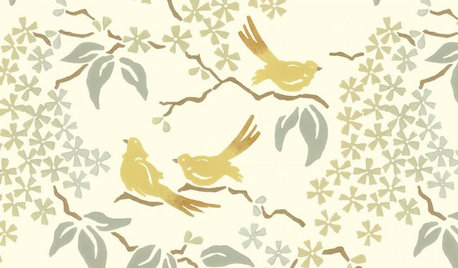
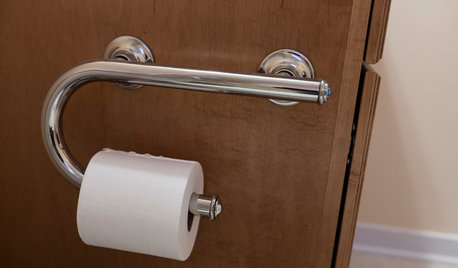
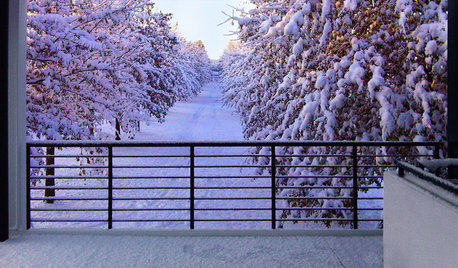

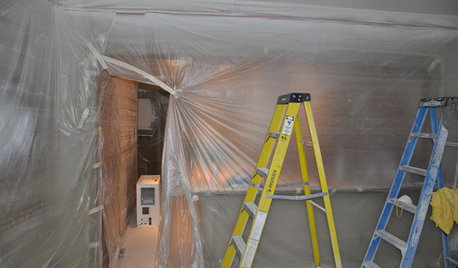



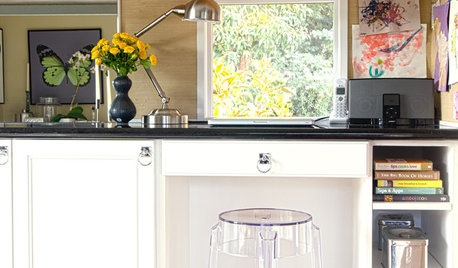
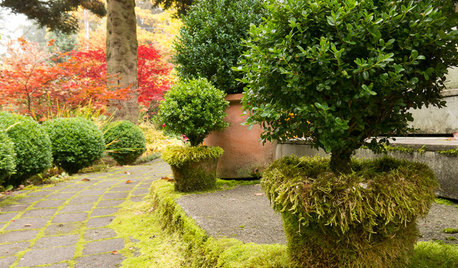











Michelle Trujillo